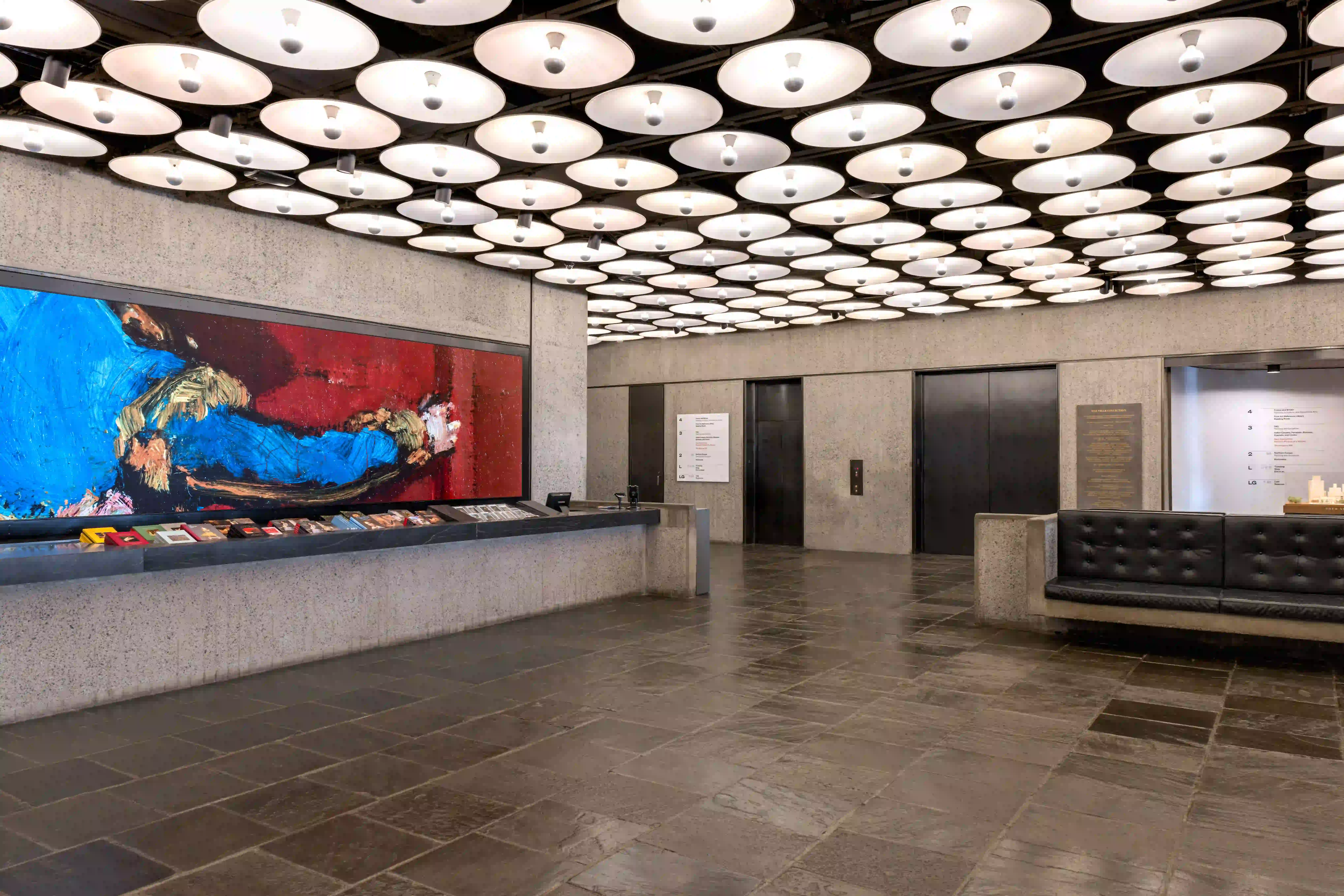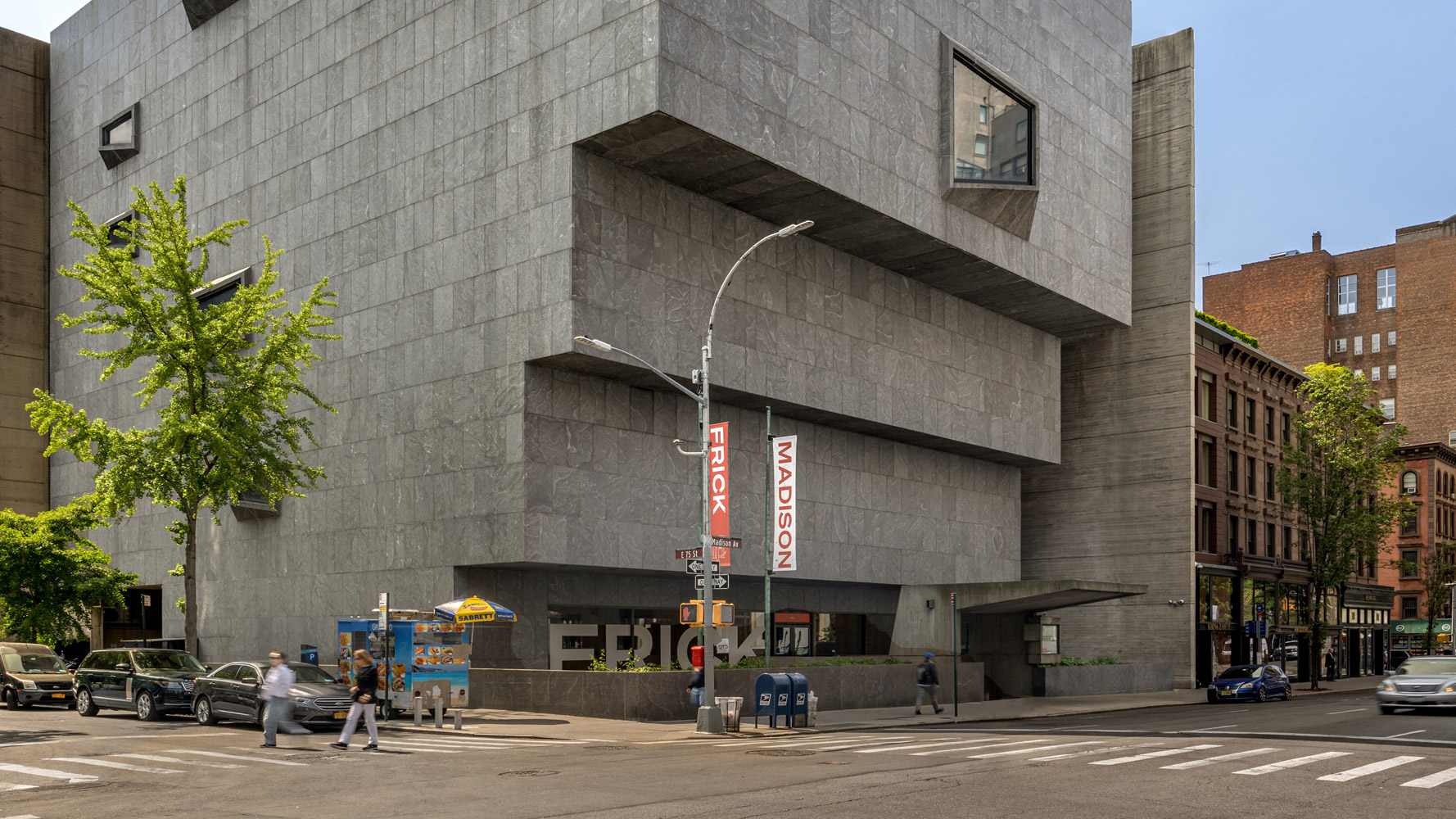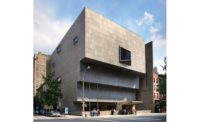On June 1, New York–based auction house Sotheby’s announced its purchase of 945 Madison Avenue in Manhattan, better known as the Whitney Breuer building, as its new global headquarters. The news indicates yet another identity change for the "inverted Babylonian ziggurat” originally designed by Bauhaus-trained Marcel Breuer in 1966 as the first permanent home of the then-itinerant Whitney Museum of American Art.
Chosen over the more established Philip Johnson, the Hungarian-German architect and furniture designer decided for the commission that the Whitney “should be an independent and self-relying unit, exposed to history, and at the same time it should transform the vitality of the street into the sincerity and profundity of art.” At the outset, the brooding five-story building courted controversy, and was declared “the most disliked building” in the city by Ada Louise Huxtable in the New York Times. “It contains many sophisticated subtleties of design and detail,” she conceded. “But the taste for its disconcertingly top-heavy, inverted pyramidal mass grows on one slowly, like a taste for olives or warm beer.”
Though public reception eventually softened and the granite-faced concrete building earned its place in the Brutalist canon, over the years space became a concern for the Whitney as its collection expanded from 2,000 to over 18,000 works. Despite flirting with proposed expansions helmed by the likes of Michael Graves and Rem Koolhaas, in 2015 the Whitney moved downtown from the Upper East Side into a new Renzo Piano Building Workshop–designed space in the Meatpacking District. However, a record-setting $131 million donation in 2008 from board chairman Leonard A. Lauder stipulated that the Whitney could not sell the Breuer Building for an indefinite “extended” period of time.
After the Whitney vacated the Breuer building and moved downtown to its more spacious digs anchoring the southern end of the High Line at 99 Gansevoort Street, the museum became landlord to fellow museum tenants. The Metropolitan Museum of Art first populated the Breuer building following the completion of an estimated $15 million restoration project led by Beyer Blinder Belle (BBB). Rechristened the Met Breuer, the building served as a satellite exhibition space dedicated to exhibiting modern and contemporary works from the Met’s collection ahead of a major planned gallery renovation project at that institution. In 2021, the Breuer changed hands again when the Met, still bound to an eight-year lease agreement with the Whitney, subleased the space to the Frick Collection in a money-saving downsizing move.
Today, the former Whitney building is known as the Frick Madison and temporarily houses works from the Frick while that nearby museum’s longtime home at the Henry Clay Frick House, a Neoclassical 1914 mansion at 1 East 70th Street, undergoes renovations.
Sotheby’s will take over custodianship of the Breuer beginning in September 2024, when the Frick’s lease and renovations, led by Selldorf Architects with BBB, conclude. That means a move one mile westward from the auction house’s current space at 1334 York Avenue, its headquarters since 1980, which underwent a major renovation by OMA in 2019 to increase exhibition space and public programming. According to a representative, Sotheby’s has no plans to sell the York Avenue building, and is exploring options for its future use.
“We often refer to the provenance of artwork, and in the case of the Breuer, there is no history richer than the museum which has housed the Whitney, Metropolitan, and Frick collections,” Sotheby’s CEO Charles F. Stewart said in a statement. The multinational art world juggernaut has not elaborated on the scope of renovations that will be made to the museum building ahead of its relocation. A Sotheby’s representative told RECORD that it “will engage an architect to sensitively review the internal spaces and maintain key elements such as the building’s striking lobby and expansive galleries.
“We have not yet identified an architect or shared any details about future plans for the building,” the representative added.

The Breuer lobby. Photo by Max Touhey, courtesy Sotheby's
Some had hoped that the Whitney would eventually return to reclaim its original Madison Avenue home, clinging to the words of former museum chairman Robert J. Hurst, who told the Times in 2015 that “there’s a good chance we’ll be financially in a position where we could run two sites if we want to.” The success of the new Whitney, however, has even swayed Lauder’s hardline position. “For us it became clear it did not really make sense to have a divided Whitney—how do you divide it?” Adam Weinberg, who is stepping down as Whitney director this fall, told the Times last week. “Also, we don’t want to be landlords.”
Despite assurances from Sotheby’s that the Breuer building’s exhibition spaces would remain open to the public, reactions to the news from the arts world have been mixed. “It is an auction house now, which will both alter the character of the Breuer and turn it into a symbol of how the art world has changed since the building went up,” New York Magazine art critic Jerry Saltz said in a recent op-ed. “Auction houses are where art loses its identity and its dignity…its purpose is not to enlighten or entertain but to be sacrificed on the altar of commerce.” On Twitter, architecture critic Mark Lamster wrote: “What a true and utter disgrace.”
Michael Kimmelman of the Times was more optimistic, saying the sale was “no surprise and not the worst outcome,” and added that the building should now formally be landmarked. Though the Breuer is protected by its position within the Upper East Side Historic District, that designation does not protect the building’s interior spaces.







Post a comment to this article
Report Abusive Comment